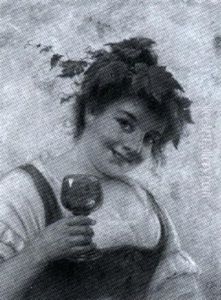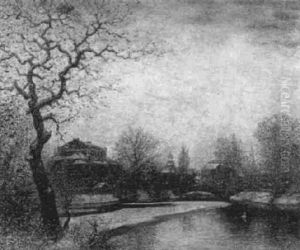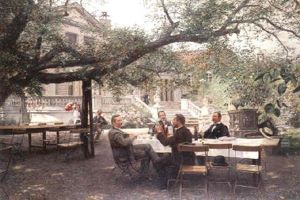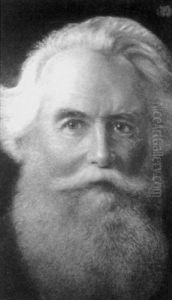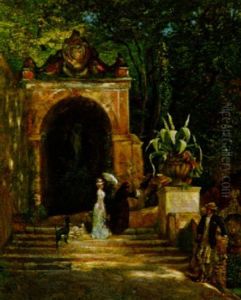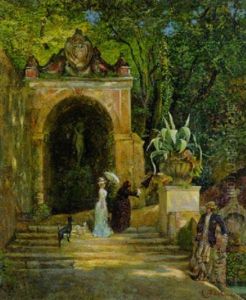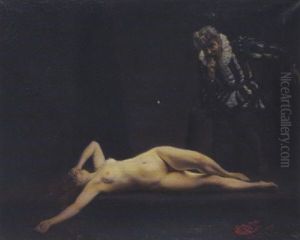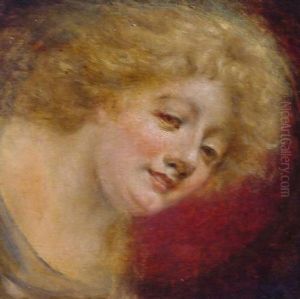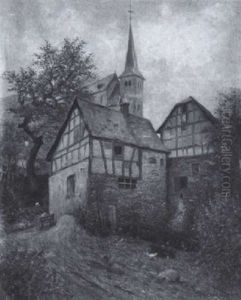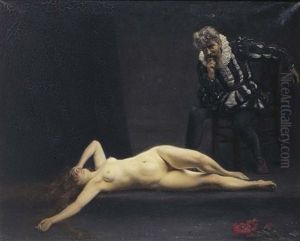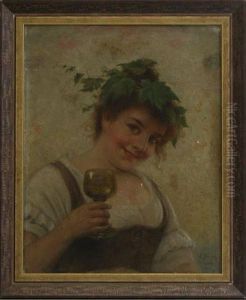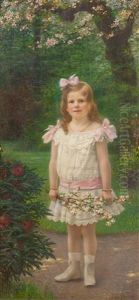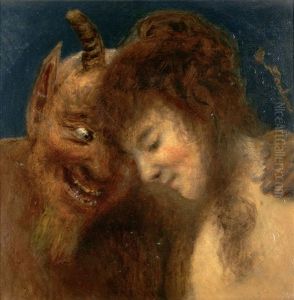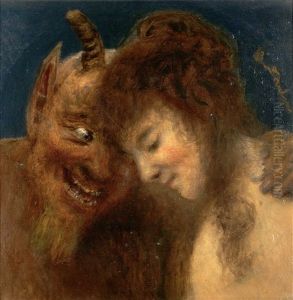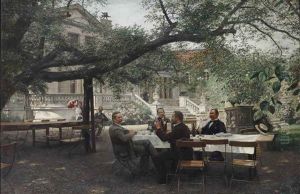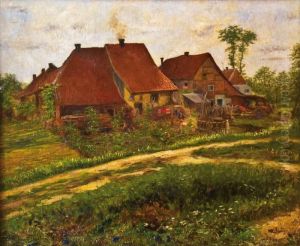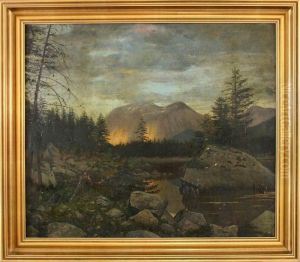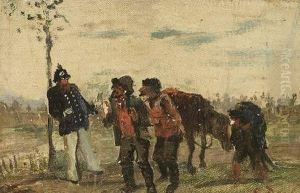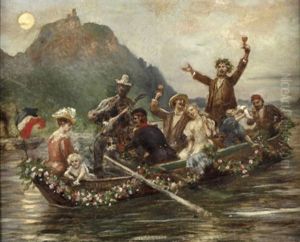Eduard Daelen Paintings
Eduard Daelen was a German painter, born in 1863 in Duisburg, which was then part of the Prussian Province of Rhineland. His career spanned the late 19th and early 20th centuries, a period marked by significant changes in art, including the transition from traditional academic painting to the more experimental approaches that characterized modernism. Despite these shifts, Daelen remained deeply influenced by the academic traditions of his education, while also incorporating elements of the emerging styles of his time.
Daelen's education in art began at the Düsseldorf Academy of Arts, an institution renowned for its adherence to academic principles of painting, which emphasized classical techniques and subjects. Here, Daelen honed his skills in drawing and painting, developing a keen eye for detail and a profound appreciation for the human form, landscape, and historical subjects that would dominate his oeuvre. His style was characterized by meticulous attention to detail, a rich palette, and a commitment to realism, all of which were hallmarks of the academic tradition.
Throughout his career, Eduard Daelen participated in numerous exhibitions, gaining recognition for his portraits and historical paintings. His works often depicted scenes from German history and literature, reflecting a deep interest in the cultural heritage of his homeland. Despite the rise of avant-garde movements such as Impressionism and Expressionism in Germany, Daelen's work remained relatively conservative, focusing on beauty, technical skill, and narrative depth rather than embracing the radical stylistic innovations of his contemporaries.
Daelen's contributions to German art were recognized in his time, though he did not achieve the same level of international fame as some of his contemporaries. His paintings are preserved in various German museums and collections, serving as a testament to his skill and dedication to the academic traditions of art. Eduard Daelen died in 1938, leaving behind a body of work that, while perhaps not revolutionary, represents an important link in the chain of German art history, bridging the gap between the academic art of the 19th century and the diverse artistic expressions of the early 20th century.
